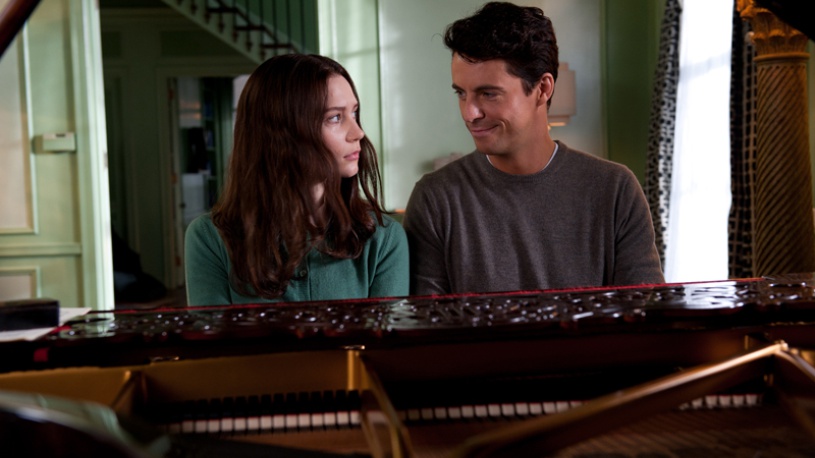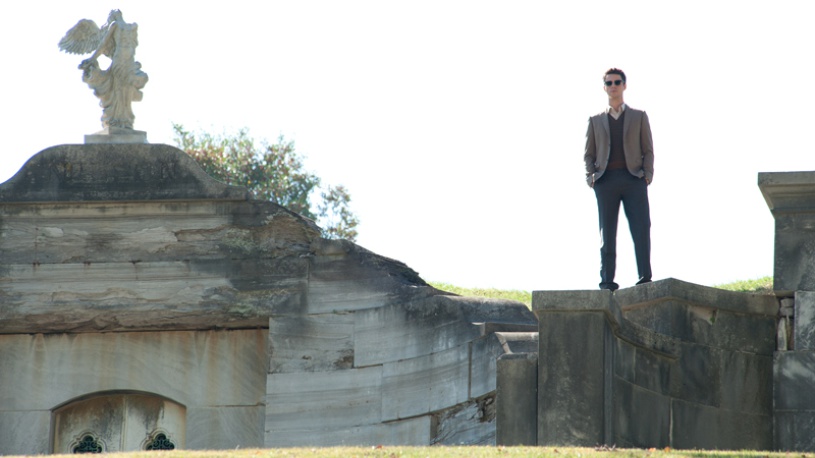The newest psychological thriller from Park Chan-Wook comes in the form of Stoker. The film begins with India, played by Mia Wasikowsha, drumming away on the piano in an almost frantic manner as a spider begins to crawl up her leg. India is both surprised and fascinated by this creature. In the film, Wasikosha delivers a monologue that reveals more about India’s “talents.” “My ears hear what others cannot hear, small far away things people cannot normally see are visible to me. These senses are the fruits of a lifetime of longing, longing to be rescued, to be completed. “
After this opening scene, the audience begins to experience the world as India does. Director Park does this with stunning visuals and exquisite audio accompaniment every facet of India’s world becomes a part of the viewer’s throughout the duration of the film. It is soon revealed that Richard, India’s father and best friend played by Dermot Mulroney, has died in a tragic automobile accident on her 18th birthday. It is at the funeral that the long-gone Uncle Charlie, played by Matthew Goode, enters the picture.
Uncle Charlie is charming, well spoken and multitalented and soon India’s mother, Evie, played by Nicole Kidman, is falling over herself to garnish attention from this seemingly flawless man. Highly unstable and obviously lonely Evie is eager to invite Charlie for an extended stay. India, while at first weary of Charlie, begins to realize the vast similarities between them. Her initial distrust turns into infatuation as Charlie reveals himself bit by bit.
The film is a visual masterpiece and although dialogue is sparse it is poignant. The real greatness of the film came from Park’s story telling. Best known for movies such as Oldboy and Lady Vengance, Park has always had a talent for adding suspense and drama in an otherwise simple scene. Through excellent framing and editing, Park and his constant counterpart, cinematographer Chung Chung- Hoon, were able to capture the essence of the film all the while using unconventional shots and striking cinematography. Paired with an incredibly engaging soundtrack an air of anticipation and excitement was created.
In a roundtable interview with Wasikowsha, Goode and Park the film was further disceted to develop a better understanding of the piece and the roles each had in creating it. Through the interview it was revealed just how important the little things matter to the acclaimed director. It is Park’s dedication to every minute detail that creates an experience with the film. Both actors spoke of Park’s extensive storyboards and his process for bringing the actors closer to their characters. Goode commented, “He is so fastidious I’ve never seen anyone come to pre-production with 90 percent of the film properly made in his mind and drawn out frame by frame…He story boarded the hell out of it beautifully, not stick men, like beautifully drawn with a team of people doing it and so you know he was like we cant start filming in this location yet because I haven’t got the color of the walls to the same of this eggshell.”
In the case of Wasikowsha, Park would send her pictures of famous painting or photographs he felt reminded him of India. Soon Wasikowsha was sending Park back photos and through this the two created a dialogue the two could really understand. This being the first English-speaking film for Director Park from the outside it would seem as if it was a struggle for the actors to work with under someone who didn’t’ speak the language. Goode said, “ultimately if you break it down to it’s bear bones it’s just listening and responding and that’s being captured by the camera, so that’s not me being facetious.” The storyboards along with a translator and some over zealous pantomiming helped Goode and Park really communicate.
This communication was key in understanding the dense characters that are Charlie and India. Through them the film delves deeper into what is evil and when does it begin. It begs to question whether evil is born or if it is made. “I mean, it’s all about what Director Park called bad blood and the idea whether it’s predisposition or in the family bloodline to do these acts,” said Goode. “… And Charlie, my whole thing with him was he’s isolated, he’s lonely…And so you wanted to get the confusion for me for an audience of very masculine and adult, but almost an innocence to him in his own little world.”
The isolation is something India understands and as it brings the two together a familial relationship becomes sexually charged and the audience is drawn into the crossfire. Wasikowsha said,” the dynamic between her [India] and Charlie, as a very isolated person, I think it was the first time she’s ever had an experience of somebody knowing her, and in turn, her knowing someone, and there’s a real connection there that is very foreign for her and something that I think she’s excited by, but also fearful of. And again, you don’t quite know who’s in control of that dynamic between the two of them. Who’s the hunted and who’s the hunter?”
Park also elaborated on the idea of a sexual relationship between India and Charlie. In Stoker the relationship is alluded to but never acted on. In his Korean films Park has never been one to censor himself, however this film is much more tame than his others. Park said, “It to do with the fact that at the center of it, the protagonist is a young girl. To expand on that, to have the audience coming to see this film, young girls India’s age; I didn’t want to make a film where they would frown and be put off by the violence and other extreme expression. That’s why I exercised restraint myself. My ultimate goal was to create something that was aesthetically elegant and something that teenage girls India’s age would find to be beautiful.”
The film is widely appealing on multiple levels. The screenplay, written by Prison Break star, Wentworth Miller, left itself to be molded to Park’s vision. The two together created a film that was more than simply a thriller it’s a tale of growing up and understanding the world as it truly is. India’s ending monologue sums up the film but also stands to describe the transition into adulthood. “Just as the skit needs the wind to billow I’m not formed by things that are of myself alone. I wear my father’s belt tied around my mother’s blouse and shoes, which are from my uncle. This is me. Just as a flower does not choose it’s color we are not responsible for what we come to be. Only once you realize this for you become free. And to become adult is to become free.”
All photos courtesy of Fox Searchlight Pictures


